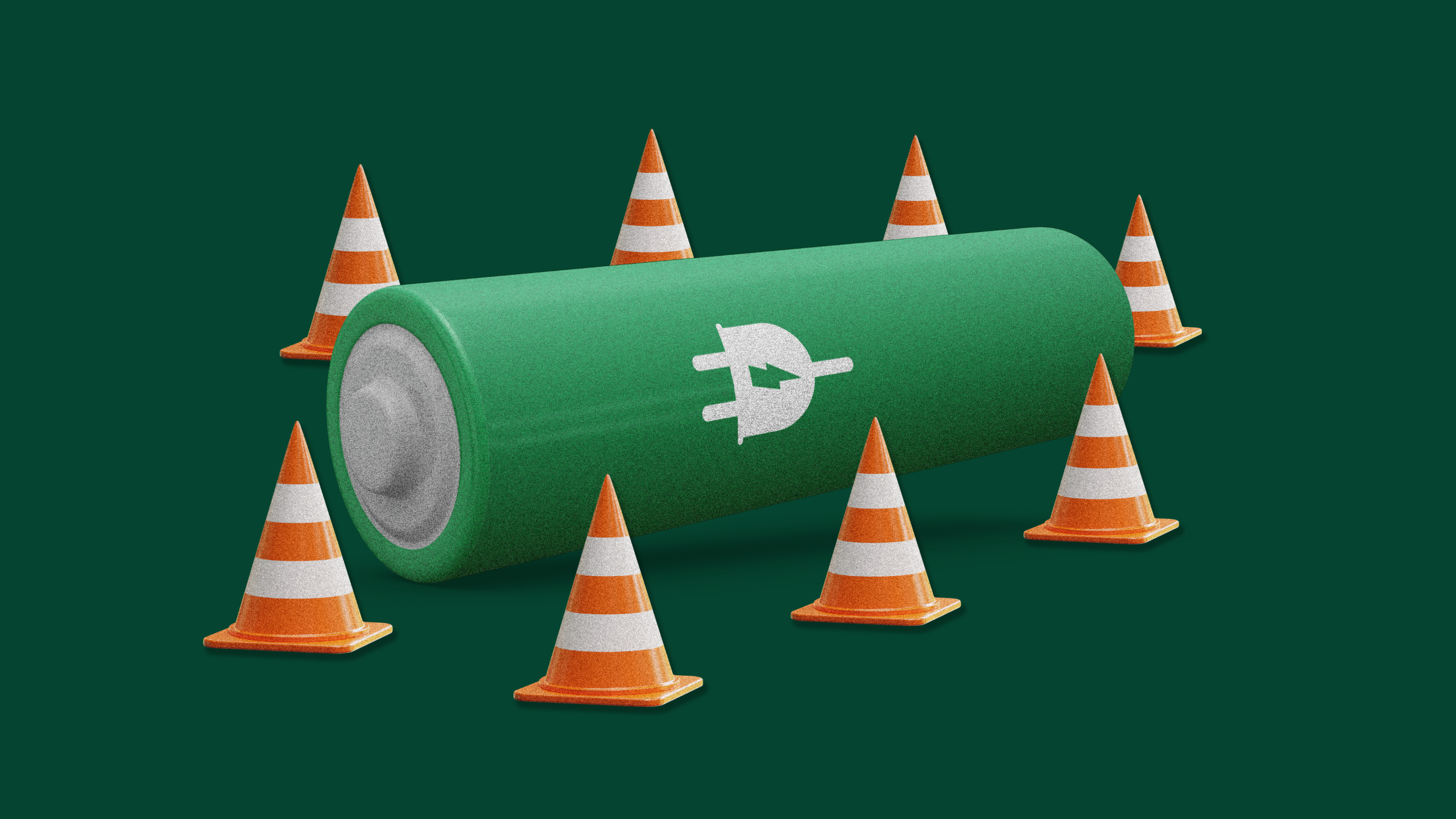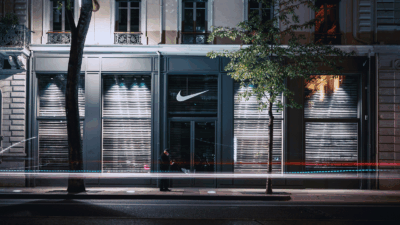Who has Liability in the Shifting World of e-commerce?
Amazon has largely dodged liability for the products sold on their virtual shelves. But could the legal tides be shifting?

Sign up for smart news, insights, and analysis on the biggest financial stories of the day.
If you buy a lithium-ion battery from a brick-and-mortar shop and it catches fire when you plug it into the wall, you know who’s liable: the store. But what about faulty products purchased on an e-commerce platform? Who are you supposed to sue?
Fittingly for a hyperscaling tech giant, Amazon grew so fast, so quickly over the past two decades that the legal frameworks of the pre-internet Stone Age were hopeless to keep up with the times — allowing Amazon, and similar massive e-commerce marketplaces, to largely dodge liability for the products sold on their virtual shelves.
But the legal tides may be shifting. While Amazon is typically pitted against the antitrust authorities at the Federal Trade Commission and the Department of Justice, it’s the machinations of another US agency that may be keeping Amazon up at night. Earlier this year, The Wall Street Journal reported that the Consumer Product Safety Commission (CPSC) was preparing to vote on whether the company should be classified as a “distributor” of goods, thus rendering it liable for the products sold on its platform. (An agency spokesperson told The Daily Upside that it had yet to reach a final decision, and declined to offer a timetable).
Through courts, legislation, and government agencies, the question of whether modern e-commerce platforms should be held to the same standards as old-school retailers seems to be hanging in the balance today more than ever before — while cheap, potentially dangerous electronic goods are flooding the market in unprecedented numbers.
If the status quo indeed shifts, it could fundamentally change how Amazon and its competitors do business.
Assault & Battery
Ultra-cheap electronics goods, such as a $15 blender or a $25 off-brand Theragun, have become ubiquitous in modern life, thanks in large part to their availability via third-party sellers on Amazon or budget marketplaces like the fast-rising Temu. But, too often, these cheap products come with an added cost.
“The increasing incidents of lithium-ion batteries catching fire highlight a significant gap in consumer product safety,” Jonathan Damashek, a personal injury attorney at Hecht Kleeger & Damashek, told The Daily Upside. “Ultra-cheap consumer electronics pose significant risks to consumers. These products frequently bypass rigorous safety testing to keep prices low, leading to higher chances of malfunctions and hazards such as battery fires.”
Last year, the New York City Fire Department recorded 267 fires and 18 deaths, as well as another 150 people injured, from fires started by lithium-ion batteries; that’s up from 104 fires and four deaths in 2021. Fire departments in other cities have recorded similar upticks in incidents.
Experts suggest consumers act with diligence when buying electronic goods, seeking products certified by third-party safety testers. But in the age of massive e-commerce platforms, that may be harder than ever.
“Third-party sellers on online marketplaces disproportionately sell noncompliant or dangerous electrical goods, compared to electrical products sold by reputable retailers,” David Powell, a technical expert at UK-based nonprofit Electrical Safety First, told the WSJ.
And it’s not just lithium batteries causing problems. In the CPSC case, the agency specifically identified 24,000 faulty carbon monoxide detectors, 400,000 hair dryers, and a slew of children’s pajamas that failed flammability tests. One source told the WSJ that the volume of faulty items sold by Amazon third-party sellers identified by the agency was far more expansive than just those three.
It’s the Wild West out there, and the question of liability has created a divide in the legal system.
Tort of Law: Retail sales involve three parties: the consumer, the product manufacturer, and the retailer. Through the 20th century, modern tort law evolved to place liability for faulty or dangerous products on both the manufacturer and the retailer — with the retailer implicated as a transferor of the legal title of a product to the consumer (i.e., Target buys a product from a manufacturer, then sells it to a consumer).
E-commerce platforms offering third-party firms the chance to sell their products to users, on the other hand, are in a slightly different position. They’re facilitating the sale, acting as online middlemen, but their failure to take title to a product places that entity on the outside of the liability equation.
To both Amazon and the critics who argue it should take on increased liability for the products sold on its platform, that’s exactly the point:
- Amazon’s e-commerce business model is “designed specifically to evade legal responsibility for dangerous products, leading to externalized product safety risks onto the public,” Catherine Sharkey, a law professor at New York University, wrote in an article for Hastings Law Journal. She argues the old legal frameworks must be changed or reinterpreted to apply to today’s e-commerce landscape.
- To others, changing that framework would come at too high a cost. Amazon has “created this very powerful system for third-party merchants to reach a global audience and to find niche communities that they couldn’t find any other way,” Eric Goldman, a law professor at Santa Clara University and co-director of the High Tech Law Institute, told The Daily Upside. “By creating this powerful marketplace, Amazon has enabled entrepreneurs to go and cater to markets that they couldn’t otherwise cater to.”
In essence, Goldman argues that Amazon has created social value, and reinterpreting tort precedent to give it the same liability as traditional retailers would be a twisting of law to fit a system where it no longer applies — a system that offers plenty of social benefit, at that.
Shifting liability back to e-commerce platforms would not be “consistent with the evolution of the retail industry,” Wedbush Securities analyst Scott Devitt told The Daily Upside. Devitt adds that requiring platforms like Amazon to ensure the safety of every product that moves through their marketplaces would be logistically impossible, though Amazon would be “best positioned” to do so in the industry.
Unfulfilled: To those on the other side of the argument, e-commerce platforms, and especially the dominant Amazon, are still acting in plenty of ways that mirror traditional retailers — while shirking the responsibility those brick-and-mortar stores must bear.
“E-commerce companies can (and have) readily (and profitably) exploit this formalistic definition of seller tied to transfer of legal title by designing a business model for a platform middleman who conveys title from a third-party vendor to end-user, otherwise acting much in the way of a traditional seller or distributor of goods,” Sharkey wrote.
In reasoning that’s been echoed by the CPSC, Sharkey argues that plenty of Amazon’s behavior — particularly when merchants use its Fulfilled by Amazon service — mirrors that of traditional retailers. (It should also be noted that Amazon is taking increasingly large cuts of third-party sales, and allegedly punishing merchants who opt not to use its fulfillment services).
Sharkey argues that like retailers, Amazon:
- Offers warranties against product defects, signaling a “willingness and ability to control risks.”
- Takes physical possession of goods in the fulfillment process, signaling “the level of control it exerts.”
- Is a necessary intermediary to bring the final product to consumers — which was long a key legal reasoning for placing liability on retailers.
Essentially, if it looks like a JCPenney, and it quacks like a JCPenney, legally speaking, it should be treated like a JCPenney.
Unprecedented: How the law will ultimately settle remains an open question. Amazon has won and lost cases in both directions, while many end up as settlements, thus preventing the establishment of legal precedent. Goldman, however, points to a case the company lost last year, in which it was found liable for the sale of spy cameras designed to look like bathroom hooks.
“The court basically opened the door and said, ‘You might be liable for all the spy cams… that you sell,’” Goldman told The Daily Upside. “And that would, of course, rock Amazon’s world.”
Meanwhile, Congress last summer passed the Inform Consumer Act, which requires e-commerce platforms to provide users with far more information about the third-party merchants they are buying from, though Goldman says it’s too soon to assess its impact.
The biggest wild card may be the fallout from the Loper Bright Enterprises v. Raimondo Supreme Court ruling this summer, which upended years of the so-called Chevron deference doctrine that granted federal agencies protections from legal challenges. That ruling may undermine the CPSC’s efforts to shift liability back to Amazon.
Either way, expect many more court cases and legal battles as the law continues to sort out. And maybe not before too long, every American will be in possession of the one thing our litigious society demands: knowing who to sue.











